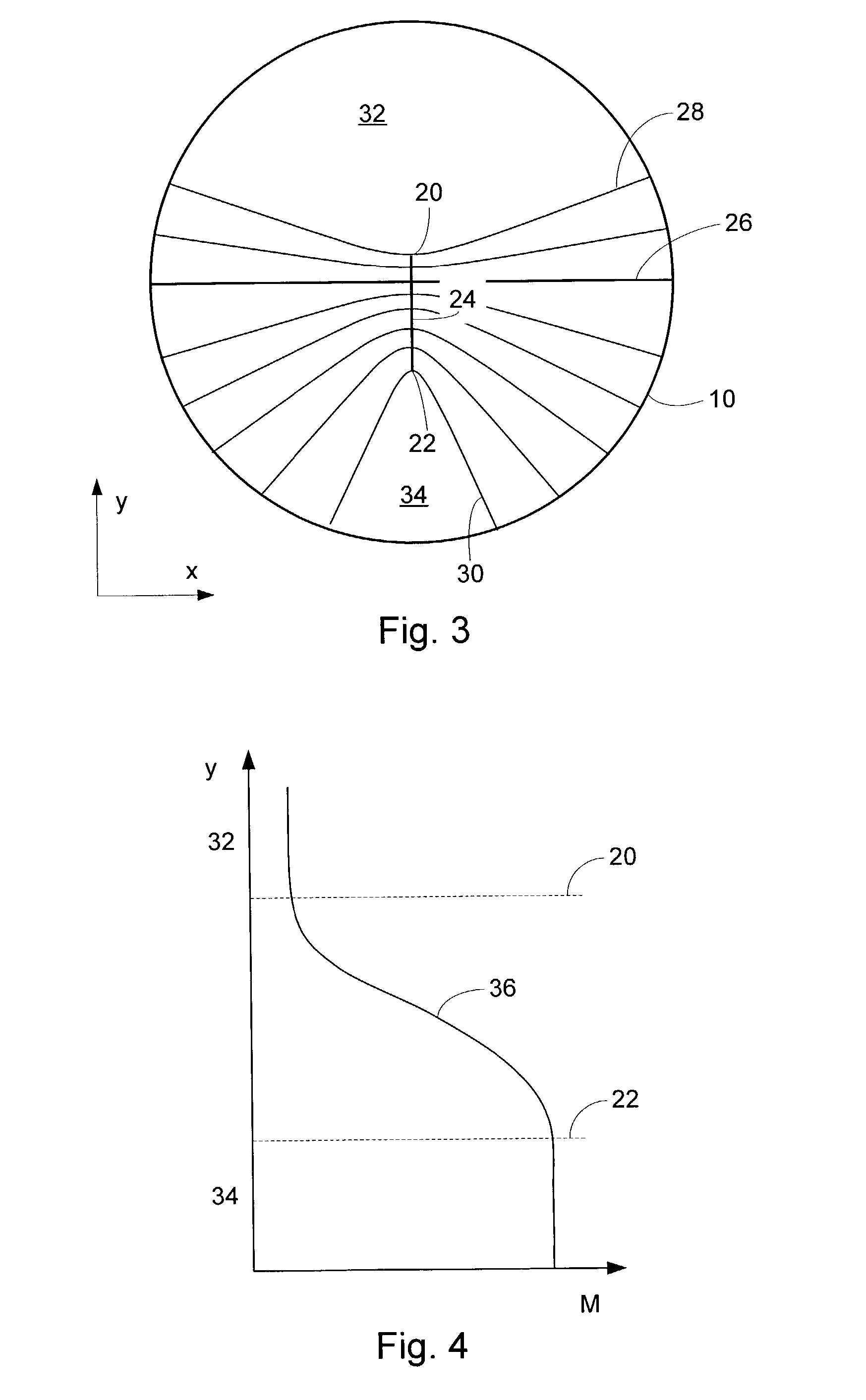Progressive addition power lens
a technology of ophthalmology and power, applied in optics, medical science, instruments, etc., can solve the problems of difficult focusing, wearers often experiencing discomfort, and regions adjoining the progression corridor and lens edge tended to have significant astigmatism
- Summary
- Abstract
- Description
- Claims
- Application Information
AI Technical Summary
Problems solved by technology
Method used
Image
Examples
Embodiment Construction
[0054] Certain embodiments of the invention will now be described, by way of example only, to illustrate the subject matter of the invention. The surface of a lens may be described by the equation z=f(x, y), where x, y, and z are rectangular Cartesian co-ordinates.
[0055] For brevity let 1x x ;y y ;x 2 2 x 2 ;y 2 2 y 2 ; and xy 2 2 x y.
[0056] principal radii of curvature R.sub.1 and R.sub.2 of the surface are the roots of the quadratic equation:
.left brkt-bot.rt-s.sup.2]R.sup.2+h[2pqs-(1+p.sup.2)t-(1+q.sup.2)r.right brkt-bot.R+h.sup.4=0 (1)
[0057] where p.ident..differential..sub.xz, q.ident..differential..sub.yz, r.ident..differential..sub.x.sup.2z, s.ident..differential..sub.xy.sup.2z-, t.ident..differential..sub.y.sup.2z and 2 h ( 1 + p 2 + q 2 ) .
[0058] See, e.g., I. N. Bronshtein & K. A. Semendyayev, "A Guide Book to Mathematics," Verlag Harri Deutsch, 1971, hereby incorporated by reference in its entirety.
[0059] The principal values of curvature are 1 / R.sub.1 and 1 / R.sub.2 respe...
PUM
 Login to View More
Login to View More Abstract
Description
Claims
Application Information
 Login to View More
Login to View More - R&D
- Intellectual Property
- Life Sciences
- Materials
- Tech Scout
- Unparalleled Data Quality
- Higher Quality Content
- 60% Fewer Hallucinations
Browse by: Latest US Patents, China's latest patents, Technical Efficacy Thesaurus, Application Domain, Technology Topic, Popular Technical Reports.
© 2025 PatSnap. All rights reserved.Legal|Privacy policy|Modern Slavery Act Transparency Statement|Sitemap|About US| Contact US: help@patsnap.com



